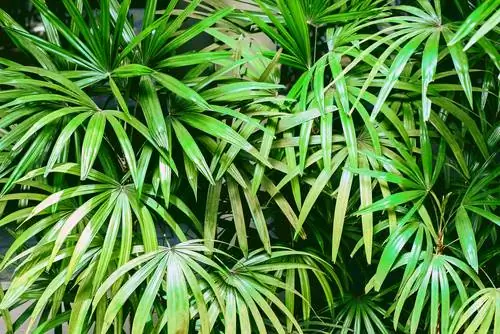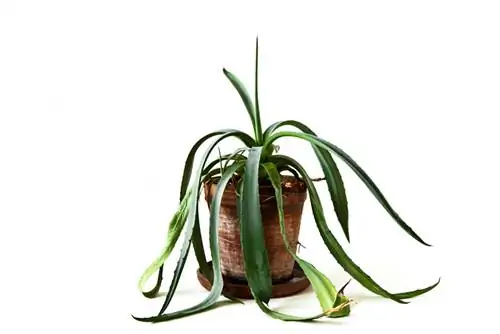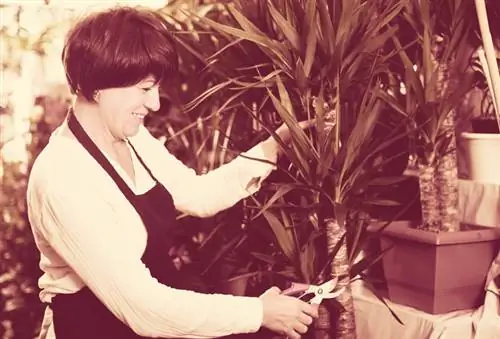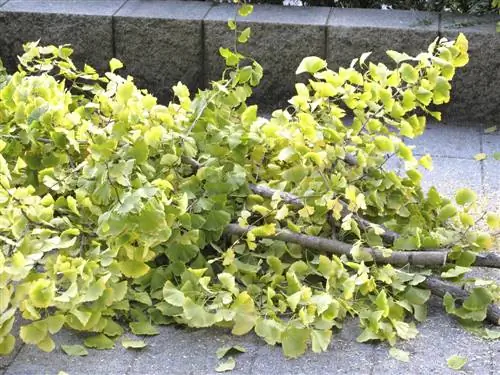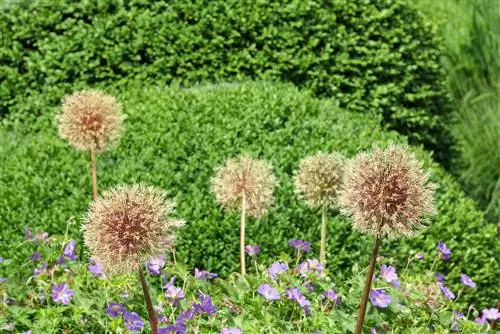- Author admin [email protected].
- Public 2023-12-16 16:46.
- Last modified 2025-01-23 11:20.
In the vegetation cycle of an amaryllis, the leaves act as important signal transmitters. Furthermore, the foliage makes a central contribution to the supply of buds and flowers. You can read here when the time has come to cut off the leaves on the Ritterstern without worrying.

When should you cut off the leaves of an amaryllis?
Amaryllis leaves should only be cut off when they are completely withered, usually in September or October. The leaves provide the buds and flowers with nutrients, so earlier pruning is not recommended. Be sure to wear protective gloves as the plant is toxic.
Leave green leaves undisturbed
As long as the leaves on Ritterstern are lush green, they are spared from the scissors. At the end of the flowering period, just cut off the withered flowers from the main stem. Only remove the hollow inflorescence stem itself when it has yellowed and dried out. The leaves remain unaffected by these cutting measures.
Until the autumn dormancy begins, the leaves are responsible for supplying the bud inside the bulb with nutrients. Over the course of the summer, the Ritterstern goes through its growth cycle, so that the care program continues uninterrupted until August, supplemented with 14-day fertilizer applications.
Cutting off the leaves does not stimulate flowering
Sometimes a knight's star only sprouts long leaves and consistently refuses to bloom. In this way, an amaryllis signals a lack of light. Instead of cutting off the vital foliage, moving to a sunny location solves the problem.
At this point, amaryllis leaves must give way
As summer comes to an end, a knight's star wants to rest for 6 to 8 weeks. A hippeastrum signals this desire by gradually absorbing nutrients from the foliage. Now is the time to cut back the leaves. How to do it right:
- From June/July, gradually reduce the amount of irrigation water
- From August onwards, stop watering and fertilizing an amaryllis
- In September/October, only cut off the drawn leaves when they have completely withered
Please carry out all cutting work on the Ritterstern with protective gloves. The entire plant is permeated by highly toxic alkaloids, which can cause fatal he alth problems if they come into contact with the skin. Therefore, do not dispose of the clippings in the compost or in other places within reach of pets. If your pets nibble on it, there could be fatal consequences.
Tip
Do not store amaryllis bulbs in the basement near apples, pears or other climacteric fruits. These release the ripening gas ethylene into the room air, which encourages a knight's star to sprout prematurely, long before the regeneration phase is complete.


